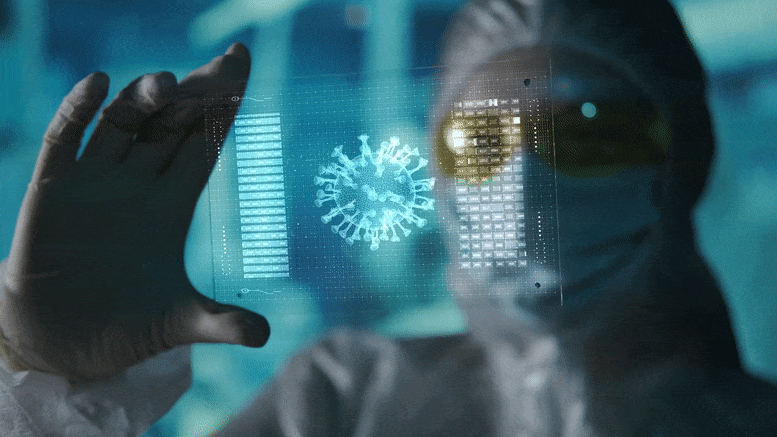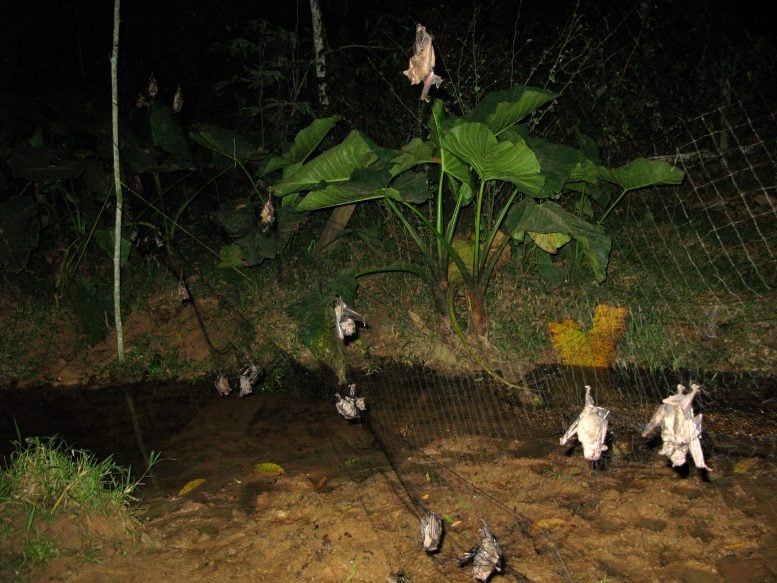
Scientists suggest that machine learning using viral genomes can predict the likelihood of animal-infecting viruses infecting humans, based on relevant exposure.
Most emerging infectious diseases of humans (like COVID-19) are zoonotic – caused by viruses originating from other animal species. Identifying high-risk viruses earlier can improve research and surveillance priorities. A study published in PLOS Biology on September 28th by Nardus Mollentze, Simon Babayan, and Daniel Streicker at University of Glasgow, United Kingdom suggests that machine learning (a type of artificial intelligence) using viral genomes may predict the likelihood that any animal-infecting virus will infect humans, given biologically relevant exposure.
Identifying zoonotic diseases prior to emergence is a major challenge because only a small minority of the estimated 1.67 million animal viruses are able to infect humans. To develop machine learning models using viral genome sequences, the researchers first compiled a dataset of 861 virus species from 36 families. They then built machine learning models, which assigned a probability of human infection based on patterns in virus genomes. The authors then applied the best-performing model to analyze patterns in the predicted zoonotic potential of additional virus genomes sampled from a range of species.

Bats caught during zoonotic virus surveillance efforts (Madre de Dios, Peru). Credit: Daniel Streicker, Mollentze N, et al., PLOS Biology, CC-BY 4.0
The researchers found that viral genomes may have generalizable features that are independent of virus taxonomic relationships and may preadapt viruses to infect humans. They were able to develop machine learning models capable of identifying candidate zoonoses using viral genomes. These models have limitations, as computer models are only a preliminary step of identifying zoonotic viruses with the potential to infect humans. Viruses flagged by the models will require confirmatory laboratory testing before pursuing major additional research investments. Further, while these models predict whether viruses might be able to infect humans, the ability to infect is just one part of broader zoonotic risk, which is also influenced by the virus’ virulence in humans, ability to transmit between humans, and the ecological conditions at the time of human exposure.
According to the authors, “Our findings show that the zoonotic potential of viruses can be inferred to a surprisingly large extent from their genome sequence. By highlighting viruses with the greatest potential to become zoonotic, genome-based ranking allows further ecological and virological characterization to be targeted more effectively.”
“These findings add a crucial piece to the already surprising amount of information that we can extract from the genetic sequence of viruses using AI techniques,” Babayan adds. “A genomic sequence is typically the first, and often only, information we have on newly-discovered viruses, and the more information we can extract from it, the sooner we might identify the virus’ origins and the zoonotic risk it may pose. As more viruses are characterized, the more effective our machine learning models will become at identifying the rare viruses that ought to be closely monitored and prioritized for preemptive vaccine development.”
Reference: “Identifying and prioritizing potential human-infecting viruses from their genome sequences” by Nardus Mollentze, Simon A. Babayan and Daniel G. Streicker, 28 September 2021, PLoS Biology.
DOI: 10.1371/journal.pbio.3001390









AI won’t do a thing to tell us in any way when the next bad actor is going to manipulate DNA to bring about the next world killing disease. So this article is nothing more than fodder for people willing to be panic stricken.
Nice…you are a giant SHILL! Covid-19 did not jump from an animal to a worker. It was programed by the U.S. Military and then given to the Chinese who programmed it more. It was a test subject and it got loose. Stop saying it jumped to humans.
I’m glad that someone believes that AI can actually do this. However, I find myself agreeing with Dan. If the original “Novel Covid” virus was manufactured in a laboratory and gained a few virulent mutations in the wild, then AI is not going to be the fore-teller of future dangerous mutations of any other virus. It will more likely be good investigative work, tracking, contact tracing and preparation for the development of different types of vaccine that may help ready us to fight it.
AI didn’t warn us about psycho mofos like Dan and Marais so they may have a point. Get the hell off of my planet.